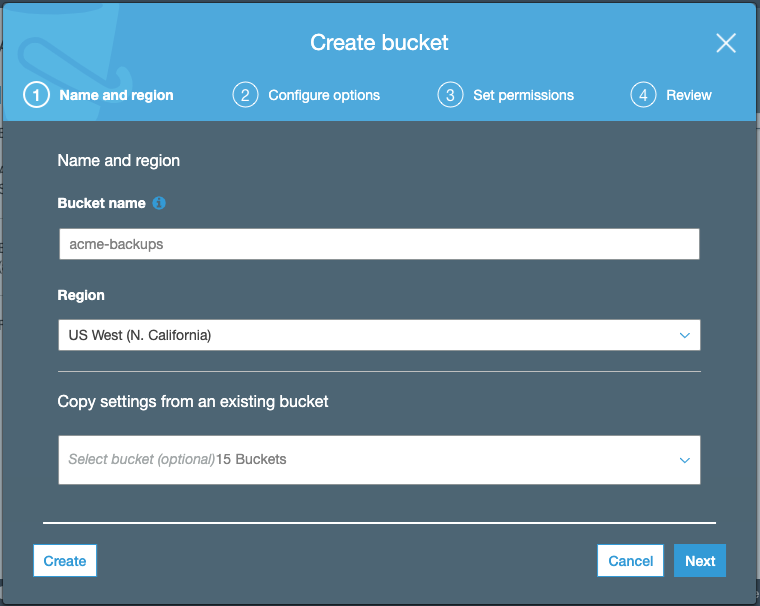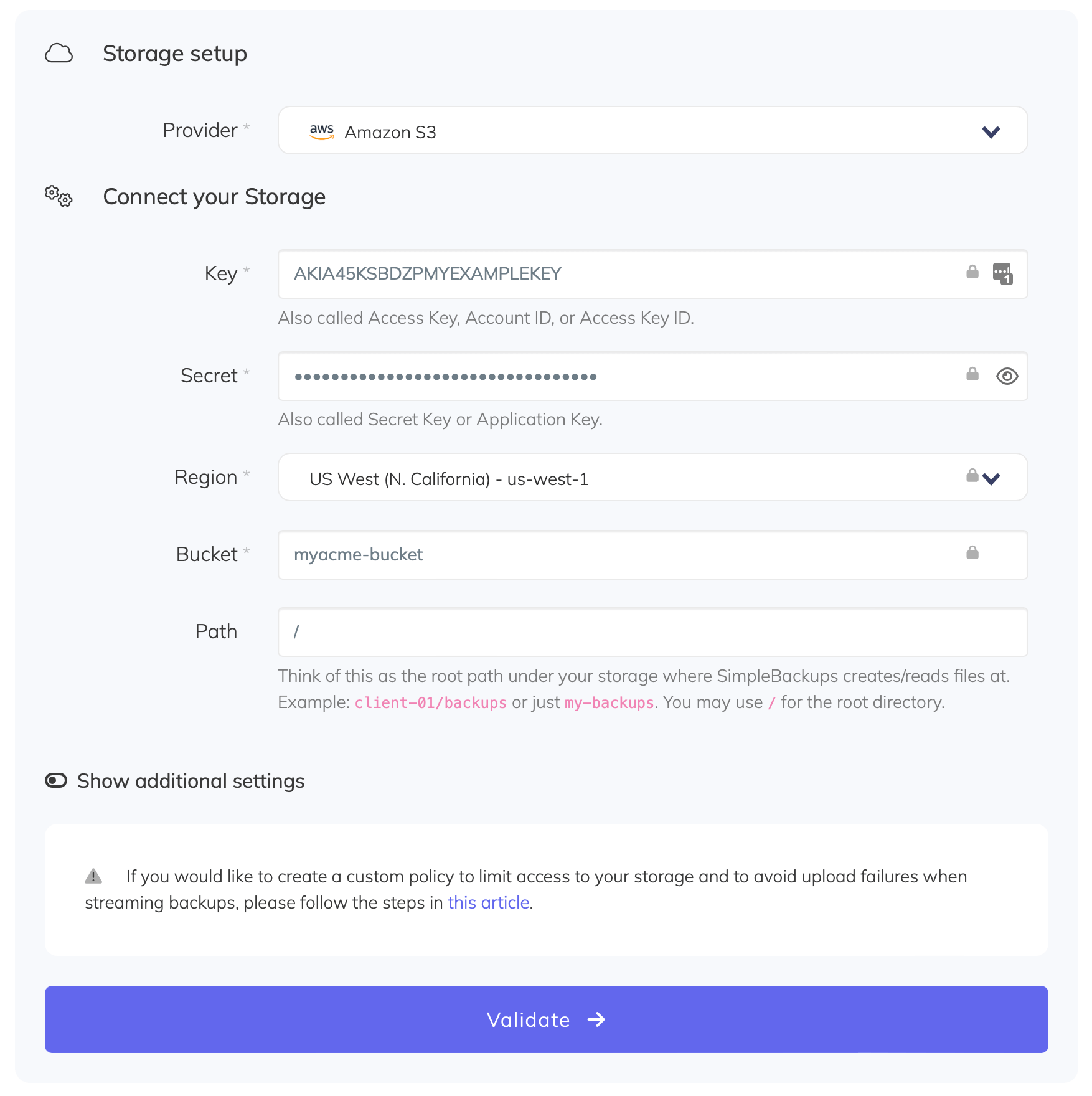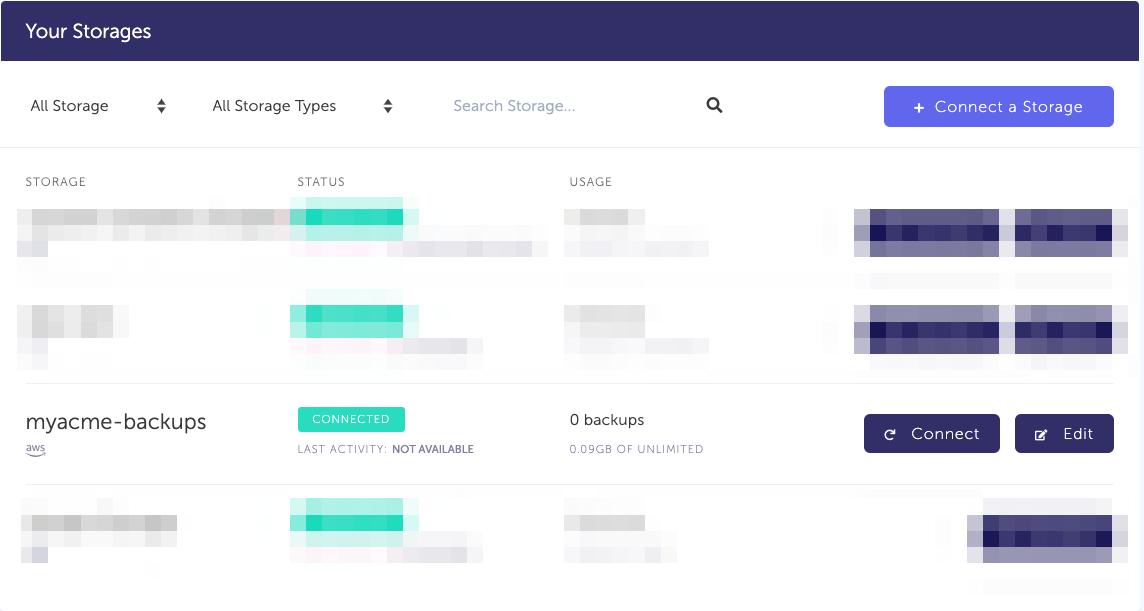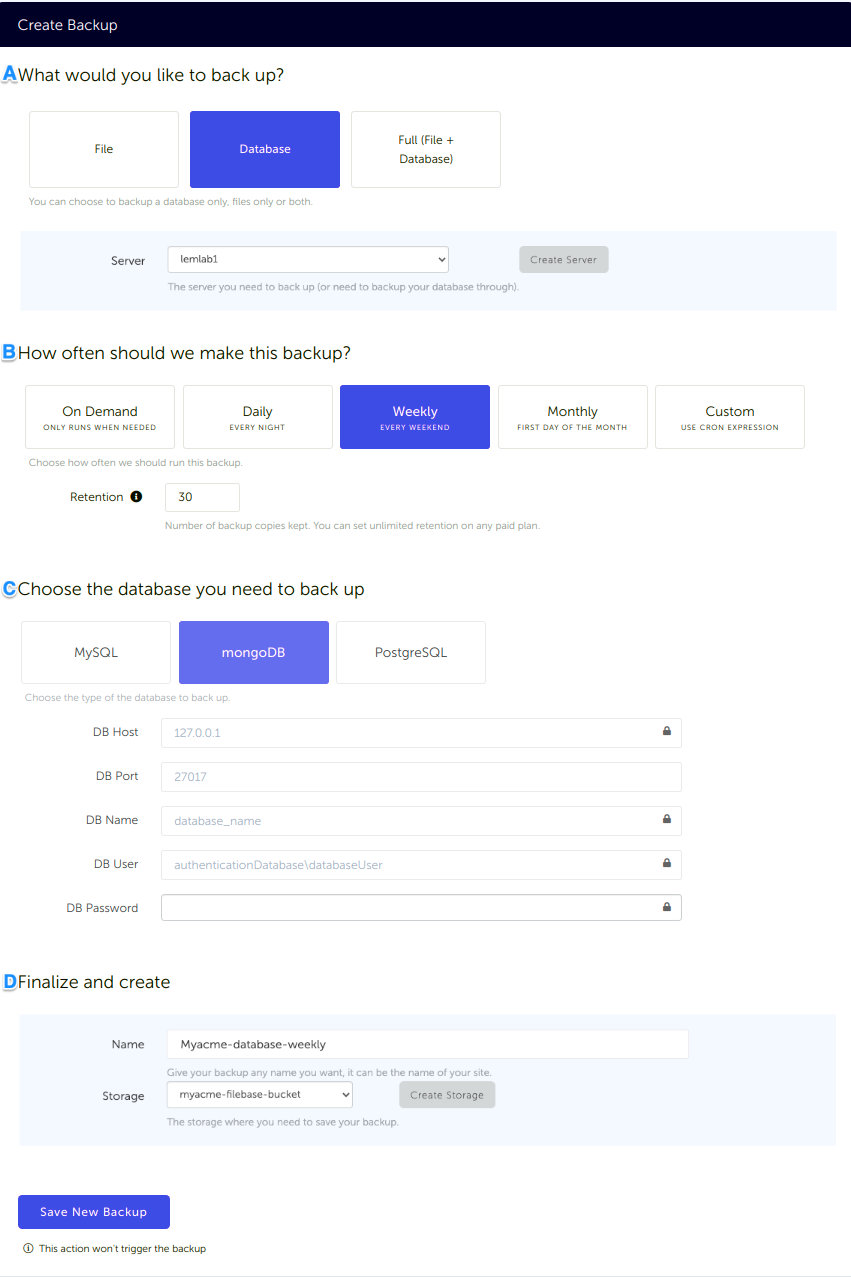Automate MongoDB database backup directly to your AWS S3 storage.
With SimpleBackups, you can backup MongoDB database to any cloud storage provider. In this article, I'll go through the entire process of setting up your backup and store it on AWS S3 specifically.
Prerequisites
- Create a SimpleBackups account
- Make sure you have your server connected to your account (the one on which your MongoDB database is hosted)
- Have a AWS S3 account (it can be empty, we'll cover how to get your S3 bucket created below)
1. Create your AWS S3 Bucket
-
Sign in to your AWS Management Console
-
Go to your AWS S3 bucket list and create a new bucket

Keep default options for (2) Configure options, (3) Set Permission, review and create your bucket.
Information you'll need in step 3:
- Your "Bucket" name, in this case "myacme-backups"
- Your "Bucket" Region, in this case "US West - N. California"

2. Create your AWS credentials
In order to give access to your newly created bucket, you'll need to provide credentials to SimpleBackups. Follow this simple article on how to get your AWS S3 Credentials.
Information you'll need in step 3:
- Access Key
- Secret
3. Connect your S3 bucket to SimpleBackups
- Log into SimpleBackups and head to the connect your storage page
- In the storage provider list select "Amazon S3 Storage", and fill in the form with your AWS credentials and newly created bucket information

You'll have to input :
- Key: Access Key described in (step 2)
- Secret: Secret described in (step 2)
- Region: Bucket Region described in (step 1)
- Bucket: Bucket name described in (step 1)
- Give your storage a name (the bucket name is usually a good pick, but you can be creative) and click on "Save new storage".
You'll be redirected to the list of storage where you'll find your newly connected storage.

4. Final step: Create your MongoDB backup
Now it's time to head to the create backup page.
From this screen you'll be able to configure what data you're backing up (MongoDB in this case), where you want it to be saved (in this case your AWS S3 Bucket), and how often you want this to be done.
FYI this section will be the same, no matter what storage you pick. And that's the beauty of it, if you want to change storage, just select another one from the list (Backblaze, AWS, or whatever you might prefer) and you'll be good to go.

What would you like to back up? (A)
- Select "Database" (in this article we're creating a MongoDB backup only)
- Select the server on which your database is hosted
How often should we make this backup? (B)
-
Select your schedule option (here we picked a daily schedule)
You can select a pre-defined schedule (daily, weekly, monthly) or a custom option allowing you to schedule it whenever you want to use CRON syntax.
-
Example of CRON schedule for "20:00 every Tuesday" =
0 22 * * 2Finally, the "On demand" option won't schedule anything but will allow you to trigger the backup manually or using our API.
-
Define the backup retention, which is the number of backups you want to keep (kind of the history length of your backup if you prefer)
Choose the database you need to backup (C)
- Select the type of your database, in this case "MongoDB"
- Fill in the database connection form
Finalize and create (D)
- Pick the name of your backup (this is how it will be displayed in SimpleBackups interface) and where you want to store it.
- Select your Storage (step 3)
That's it, your MongoDB backup is now ready. Run it once manually (using the "Run" backup button from the backups list) and you'll trigger your first backup!